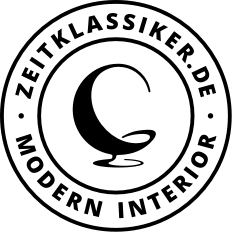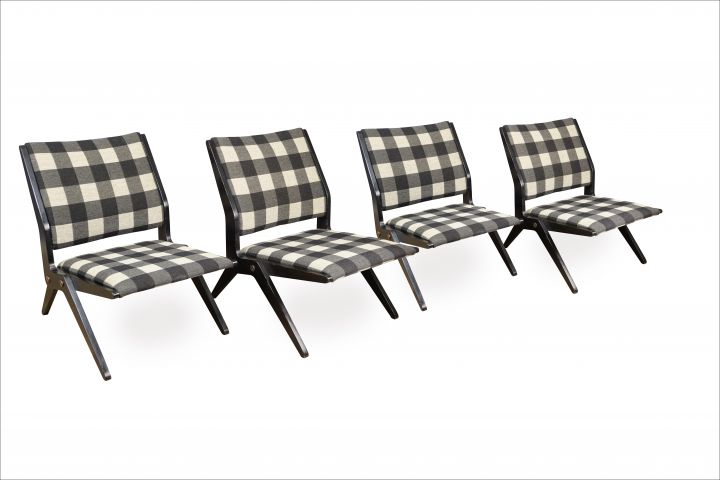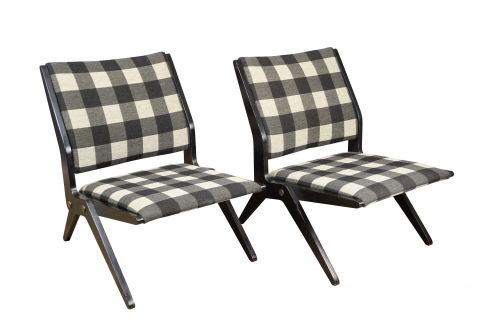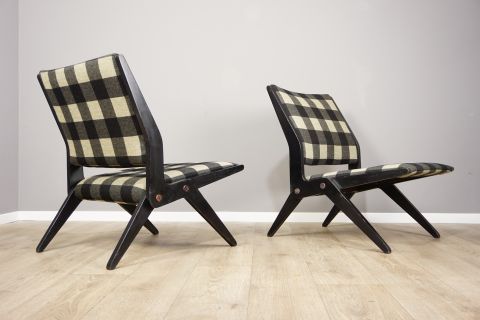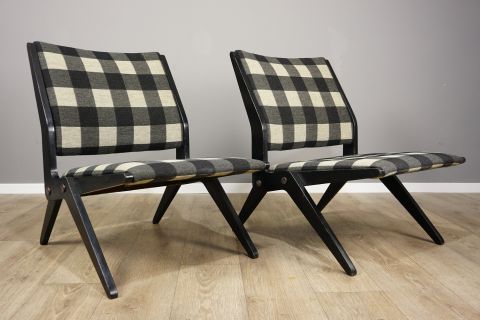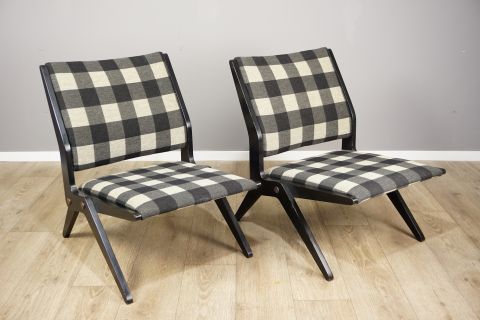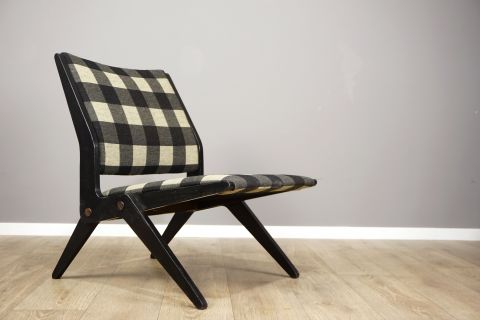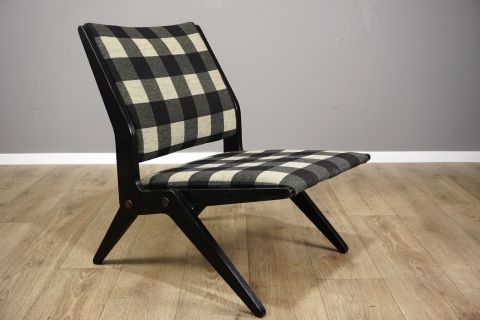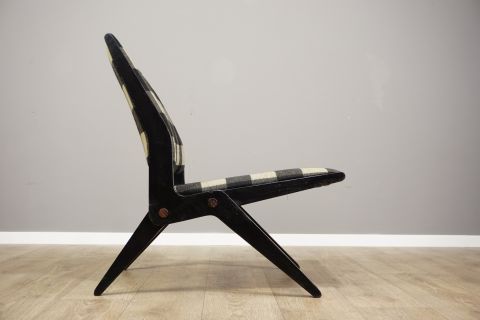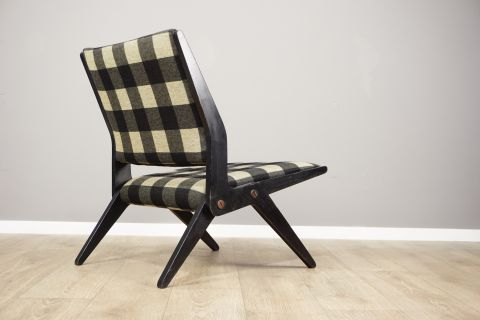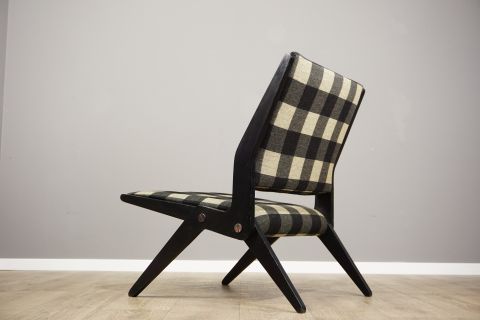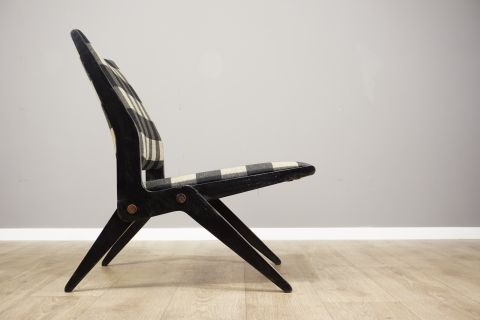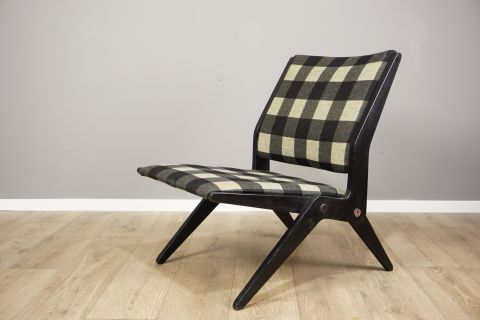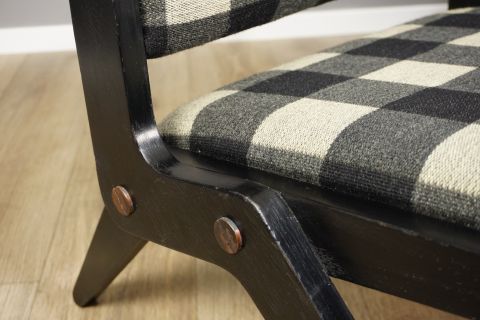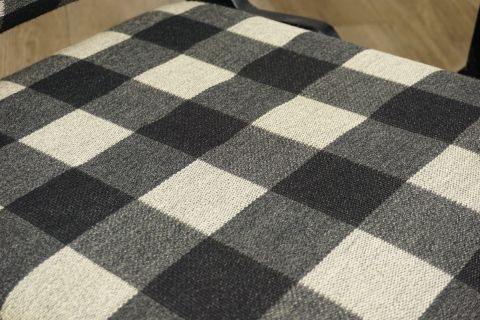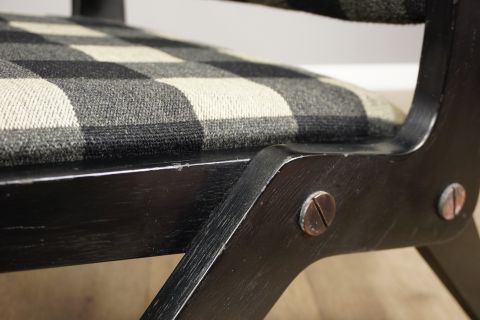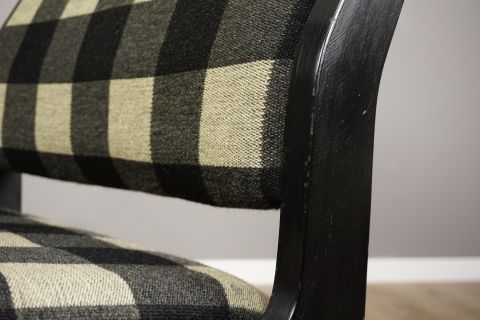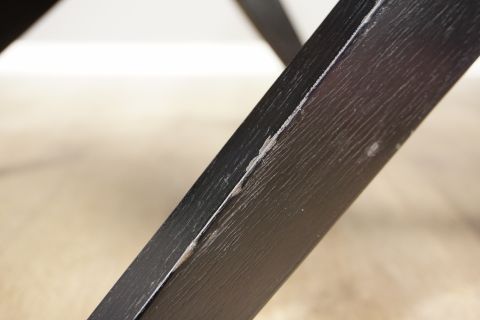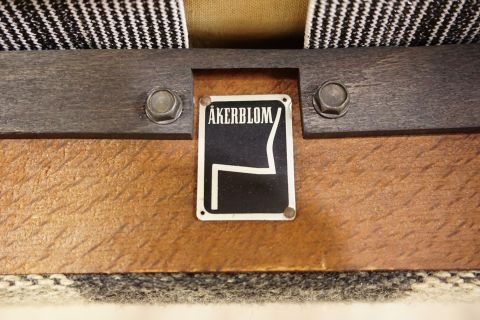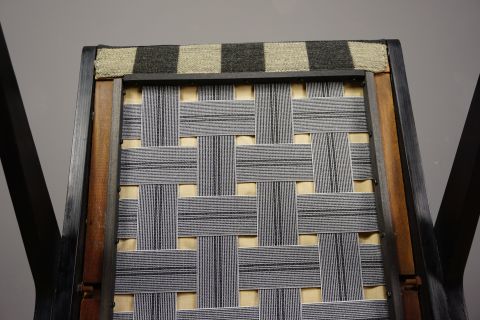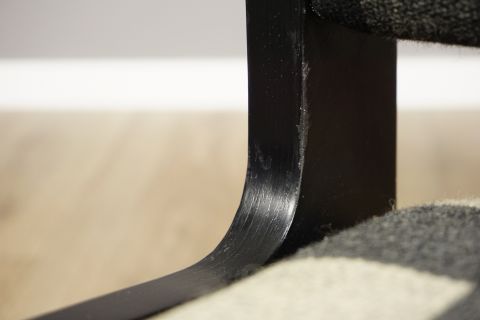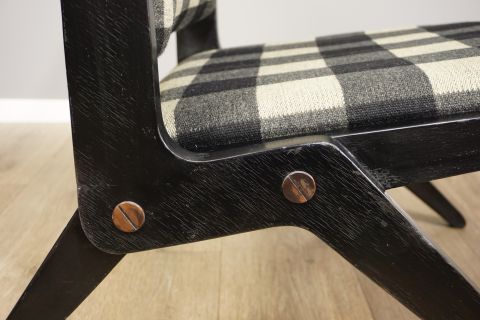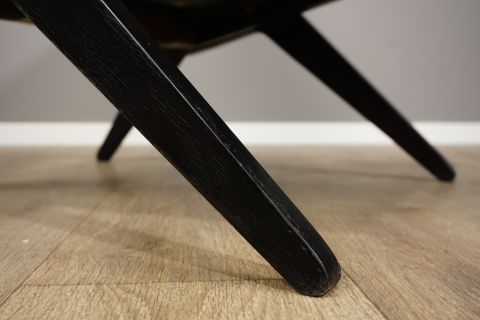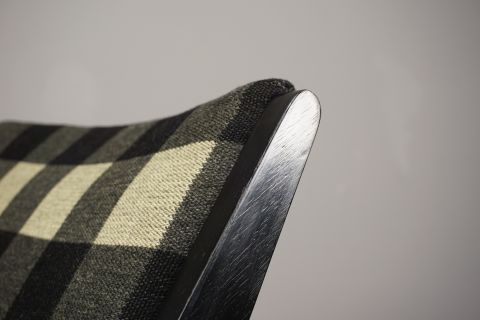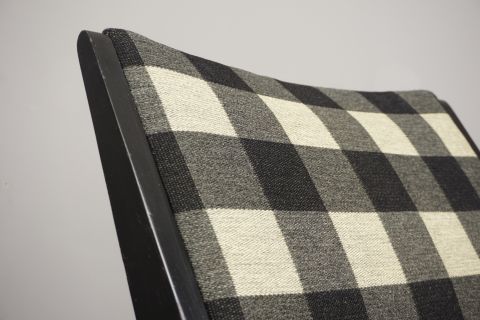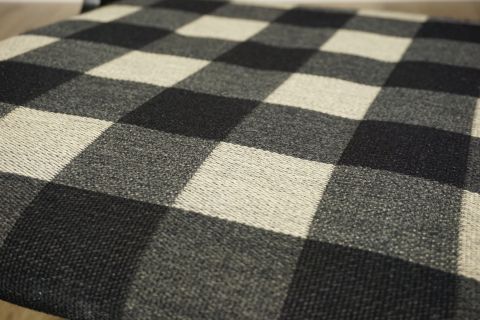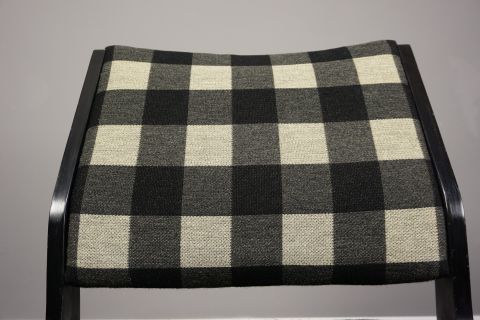Lange & Mitzlaff Akerblom Easy Chair 1950s
Albrecht Lange & Hans Mitzlaff -Åkerblom Easy Chairs for Eugen Schmidt - Soloform 1950s
Offered is one of four available Easy Chairs, which are a collaboration between
Albrecht Lange and Hans Mitzlaff - Mannheim with Bengt Åkerblom (Sweden) for Eugen Schmidt - Soloform Darmstadt .
Akerblom added the ergonomic back bend to the design, which from then on also found its way into design history as the Akerblom bend, and is also identified here by a plaque on the armchair frame.
However, the actual design came from Albrecht Lange and Hans Mitzlaff for the Eugen Schmidt-Soloform manufactory in Darmstadt.
The armchairs are rarely found on the market, so it's all the nicer
that we can offer you 4 identical models in design and condition.
This opens up potentially considerably more design options on your part.
- German mid-century design of the 1950s with Swedish participation by Akerblom.
- Ergonomic shape - please see the fold-out long description below the price for more details
- Black wooden frame open in the shape of scissors
- Good original condition, nice original patina.
- Varnishing of the wood in its first condition with partial signs of age-related wear
- Wonderful upholstery with square patterned wool in a symmetrical arrangement - original!
- Signed on the underside with the manufacturer's plaque
Width 56 cm Height 75 cm Seat height 36 cm Depth 73 cm
Price for one: €1150.
If you buy more, the price will be reduced. Please contact us for details
